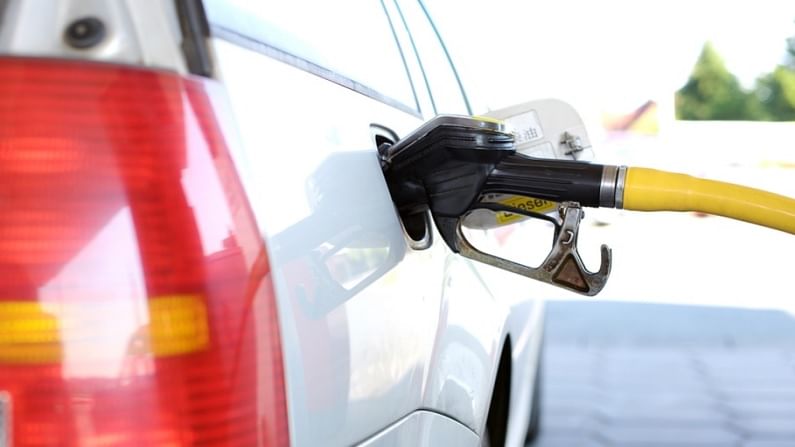Here's why fall in oil prices is vital for lower inflation
The RBI believes it is time for the central/state governments to trim down taxes clamped on diesel and petrol

The Reserve Bank of India (RBI) is at ease as the retail inflation drops to 4.6% in December 2020 on the back of slackening food prices and favourable base effects. The fall comes after it continuously breached the upper cap, set by the central bank, of 6% for six consecutive months (June-November 2020).
What has supported the decline is a 3.9% drop in food inflation after averaging 9.6% during the previous three months (September-November), riding a sharp correction in vegetable prices and softening of cereal prices. The kharif harvest arrivals and supply side interventions have definitely helped ease the food inflation too.
However, core inflation, (that is, consumer price inflation excluding food and fuel) remained elevated at 5.5% in December with a marginal moderation from a month ago. This has brought focus back on retail fuel prices in the country.
The recently-concluded meeting by the six-member Monetary Policy Committee (MPC) has raised concerns about the ever-increasing fuel prices.
“Pump prices of petrol and diesel have reached historical highs. An unwinding of taxes on petroleum products by both the Centre and the states could ease the cost push pressures,” the committee noted.
RBI Governor Shaktikanta Das has raised a red-flag over the inflationary impact of rising crude oil prices and high indirect tax rates on petrol and diesel, and pick-up in inflation of key goods and services, particularly in transport and health categories.
“Proactive supply side measures, particularly in enabling a calibrated unwinding of high indirect taxes on petrol and diesel – in a coordinated manner by centre and states – are critical to contain further build-up of cost-pressures in the economy,” he said.
Both the petrol and diesel prices have gone up in the last few months hitting record highs. As on Friday (February 26), the price of petrol in New Delhi is at Rs 90.93 per litre and diesel at Rs81.32 per litre, according to Indian Oil Corporation, the country’s largest fuel retailer. In Mumbai, the petrol and diesel stood at Rs97.34 per litre and Rs88.44 per litre respectively. IOC said the rates have remained unchanged for the last three days, after steadily moving up for over a week continuously. Petrol prices in some places in Rajasthan and Madhya Pradesh have already crossed the psychological Rs 100 per litre.
Finance Minister Nirmala Sitharaman on February 25 said she won’t be able to answer when the prices of petrol and diesel would be reduced.
“It’s not just the cess. You have the excise duty of the Centre, then you have the VAT of the states. So, there is no hiding the fact that there is revenue there. It’s not just me, you ask any state. There’s revenue there,” she said.
She reiterated that the only way to find a solution to this problem is that the Centre and states should hold a dialogue, adding that she agrees the end users should pay less for fuel.
The international brokerage Bank of America (BofA) however believes that the central government may cut auto fuel taxes by Rs 5 per litre to ease pressure on consumers as the average price of global crude oil is seen to be around $60 per barrel. “We have raised our 2021-22 fiscal deficit by 30 basis points to 7.5% of GDP, expecting a Rs5 per litre oil tax cut,” analysts at BofA said.
Stock analysts pointed out that the Rs 5 per litre tax cut could reduce the central government’s income by around Rs 71,760 crore. “This is what is holding the government back,” said an analyst.
According to BofA, the price of Indian basket of crude is currently at $62 per barrel, up from $50 per barrel in mid-December, supported by global demand recovery and voluntary production cuts from major oil exporting nations. Owing to lower demand, Indian basket of crude prices were in the range of $19-$44/barrel in the first half of 2020-21, when crude import bill fell 57% annually to $22.5 billion.
The RBI Governor said around 90% of the fall in headline inflation in December was on account of the sharp movement of vegetables into double-digit deflation as prices crashed from highly elevated levels, supported by robust winter arrivals and favourable base effect.
“This trend is likely to be further buttressed by an expected bumper kharif harvest and the rising prospects of a good rabi crop. Further softening in food inflation – both substantial and durable – would, however, be dependent upon the abatement of price pressures that are currently seen in pulses, edible oils, spices, and non-alcoholic beverages,” said Das.
RBI said the bumper kharif crop, rising prospects of a good rabi harvest, larger winter arrivals of key vegetables and softer egg and poultry demand on avian flu fears are factors auguring a benign inflation outcome in the months ahead. On the other hand, price pressures may persist in respect of pulses, edible oils, spices and non-alcoholic beverages.
In the January 2021 round of RBI’s survey, inflation expectations of households softened further over a three-month ahead horizon in tandem with the moderation in food inflation. However, one-year ahead inflation expectations have remained unchanged.
The RBI has revised the projection for CPI inflation to 5.2% in fourth quarter, 2020-21, 5.2-5% in the first half of 2021-22 and 4.3% in the third quarter of 2021-22.